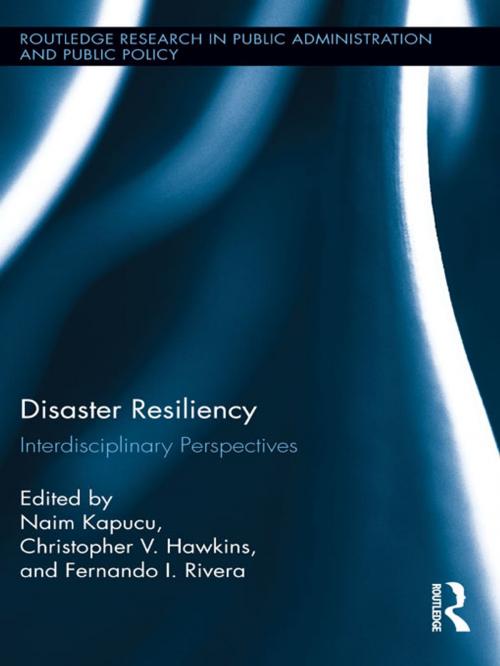Disaster Resiliency
Interdisciplinary Perspectives
Nonfiction, Social & Cultural Studies, Political Science, Government, Public Affairs & Administration, Public Policy| Author: | ISBN: | 9781136239953 | |
| Publisher: | Taylor and Francis | Publication: | May 2, 2013 |
| Imprint: | Routledge | Language: | English |
| Author: | |
| ISBN: | 9781136239953 |
| Publisher: | Taylor and Francis |
| Publication: | May 2, 2013 |
| Imprint: | Routledge |
| Language: | English |
Natural disasters in recent years have brought the study of disaster resiliency to the forefront. The importance of community preparedness and sustainability has been underscored by such calamities as Hurricane Katrina in 2005 and the Japanese tsunami in 2011. Natural disasters will inevitably continue to occur, but by understanding the concept of resiliency as well as the factors that lead to it, communities can minimize their vulnerabilities and increase their resilience.
In this volume, editors Naim Kapucu, Christopher V. Hawkins, and Fernando I. Rivera gather an impressive array of scholars to provide a much needed re-think to the topic disaster resiliency. Previous research on the subject has mainly focused on case studies, but this book offers a more systematic and empirical assessment of resiliency, while at the same time delving into new areas of exploration, including vulnerabilities of mobile home parks, the importance of asset mapping, and the differences between rural and urban locations. Employing a variety of statistical techniques and applying these to disasters in the United States and worldwide, this book examines resiliency through comparative methods which examine public management and policy, community planning and development, and, on the individual level, the ways in which culture, socio-economic status, and social networks contribute to resiliency. The analyses drawn will lead to the development of strategies for community preparation, response, and recovery to natural disasters.
Combining the concept of resiliency, the factors that most account for the resiliency of communities, and the various policies and government operations that can be developed to increase the sustainability of communities in face of disasters, the editors and contributors have assembled an essential resource to scholars in emergency planning, management, and policy, as well as upper-level students studying disaster management and policy.
Natural disasters in recent years have brought the study of disaster resiliency to the forefront. The importance of community preparedness and sustainability has been underscored by such calamities as Hurricane Katrina in 2005 and the Japanese tsunami in 2011. Natural disasters will inevitably continue to occur, but by understanding the concept of resiliency as well as the factors that lead to it, communities can minimize their vulnerabilities and increase their resilience.
In this volume, editors Naim Kapucu, Christopher V. Hawkins, and Fernando I. Rivera gather an impressive array of scholars to provide a much needed re-think to the topic disaster resiliency. Previous research on the subject has mainly focused on case studies, but this book offers a more systematic and empirical assessment of resiliency, while at the same time delving into new areas of exploration, including vulnerabilities of mobile home parks, the importance of asset mapping, and the differences between rural and urban locations. Employing a variety of statistical techniques and applying these to disasters in the United States and worldwide, this book examines resiliency through comparative methods which examine public management and policy, community planning and development, and, on the individual level, the ways in which culture, socio-economic status, and social networks contribute to resiliency. The analyses drawn will lead to the development of strategies for community preparation, response, and recovery to natural disasters.
Combining the concept of resiliency, the factors that most account for the resiliency of communities, and the various policies and government operations that can be developed to increase the sustainability of communities in face of disasters, the editors and contributors have assembled an essential resource to scholars in emergency planning, management, and policy, as well as upper-level students studying disaster management and policy.















